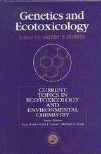Papers in the Biological Sciences

Valery Forbes Publications
Document Type
Article
Date of this Version
2008
Abstract
Capitella sp. I is a deposit-feeding polychaete that occurs in estuarine and marine environments and that shows boom-bust population dynamics in response to organic pollution. A lifecycle experiment was carried out to quantify the relative importance of individual life-history traits for driving the dynamics of Capitella sp. I populations in response to changes in sediment organic matter concentrations. Individual-level effects were estimated as changes in survival, reproductive characteristics, and growth. Effects at the population-level were assessed by integrating the measured life-history traits in a simple 2-stage demographic model that was used to estimate the population growth rate (λ). Low organic content considerably impaired individual life-history traits and, as a consequence, λ. The results of the present study suggest that the minimum organic matter concentration for the maintenance, survival and growth of Capitella sp. I is 0.2 % TOM (total organic matter), and that sediments with < 0.5 % TOM would not support Capitella sp. I reproduction. The change in λ in response to sediment organic concentration was primarily attributable to effects on time to first reproduction, which explained, on average, 47% of the variance in λ. Treatment effects on juvenile survival and fecundity explained, on average, 26 and 24 %, respectively, of the observed treatment effect on λ, whereas adult survival and time between broods together contributed about 3 % to the effect on λ. The threshold between population extinction and population increase was sharp, which suggests that relatively small changes in organic loading can have dramatic consequences for the population dynamics in this species.


Comments
Published in in Marine Ecology Progress Series 369:181-192 (2008). Copyright 2008, Inter-Research. Used by permission.